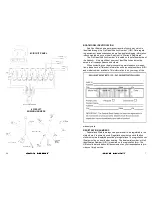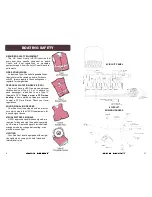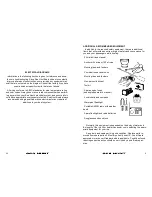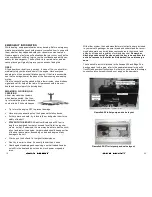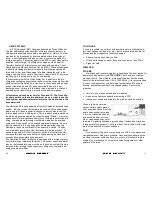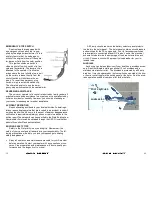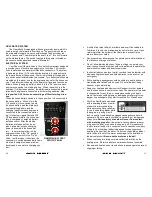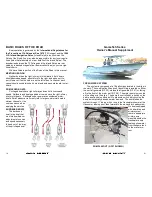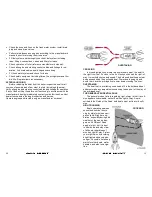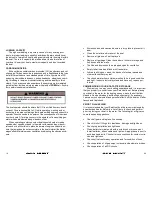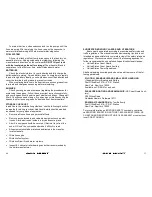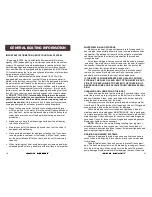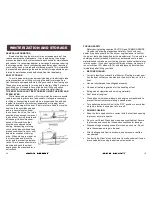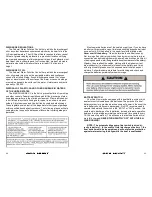
44
and carburetors. It also shortens the durability of elastomers such as
hose and gaskets. After fueling, inspect the fuel hoses, connections,
and tanks for tightness, signs of leaks, and deterioration. Annually
conduct a more detailed inspection of fuel system components, espe-
cially those hidden from routine inspection. Replace any fittings, dete-
riorated hoses, clamps or connections immediately.
FUEL TANK COMPARTMENT
The fuel compartments need to be rinsed periodically, especially
when used in a salt-water environment. Dirt accumulation attracts salt
that creates salt crystals. Salt crystals can corrode most metal sur-
faces if left untreated over a period of time. To help protect your fuel
tank from rust and corrosion rinse the compartment with FRESH wa-
ter. Remove the access plates from fuel tank lids and inspect this
area for leaks or unsecured lines.
The access plates on your fuel compartment lid seals this area.
Over time the opening and closing of these plates cause the o-rings
to wear-out. Replace these o-rings as necessary to maintain the wa-
tertight integrity of the plates.
BATTERIES
The batteries in your boat have been selected to match the starting
requirements of your engine. They should be secured in a non-metallic
tray to contain any electrolyte spills and an insulated boot should cover
at least the positive battery terminals.
21
DRIVING
Do not allow passengers to ride in the boat while trailering. Check
brakes prior to leaving. Drive as steady as possible and avoid sudden
jerks. Anticipate stops to make them smooth. Road trips call for occa-
sional stops to make sure the trailer is still secured properly.
TRAILERING
The adjustment and bal-
ance of your boat on the
trailer determines how easily
your boat may be trans-
ported. The tongue weight
on the hitch ball should be 5-
10% of the total weight of
your boat, motor and trailer.
Tail-heavy loads cause
swaying while trailering. The
rollers and/or bunks of your
trailer should be adjusted so
that the weight is distributed evenly across the stern and forward
throughout the keel sections. Your dealer is capable of adjusting your
trailer properly.
Practice maneuvering the trailer. The trailer always backs in the
opposite direction of the vehicle: To maneuver the trailer, turn the steer-
ing wheel in the direction you want the trailer to go. Prior to initial
launch familiarize yourself with this manual and all aspects of your
boat. Below is a checklist to follow when trailering your boat:
Consult your state laws as to brake and axle load requirements.
Check brakes for proper operation and fluid level prior to depar-
ture on each trip.
Check springs and undercarriage for loose parts.
Check tires for proper inflation. Under-inflated tires heat up rapidly
and tire damage or failure is likely to occur.
Wheel bearings and lug nuts should be checked before each trip.
Your boat should be fastened to the trailer by a line from the bow
eye to the winch line PLUS a bow tie-down to the winch stand or
trailer tongue. The stern of your boat should be tied down to the
trailer from the stern eyes.
Check to be sure the tail lights and turning signals work prior to
towing.
Bimini tops and canvas curtains are not designed to stay on
boats at highway speeds. Before towing, take down the Bimini
top and any canvas, if so equipped.

